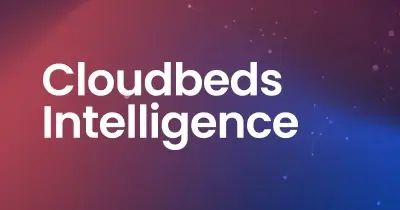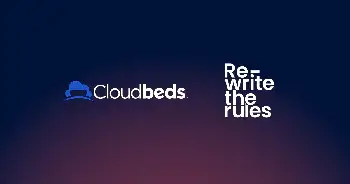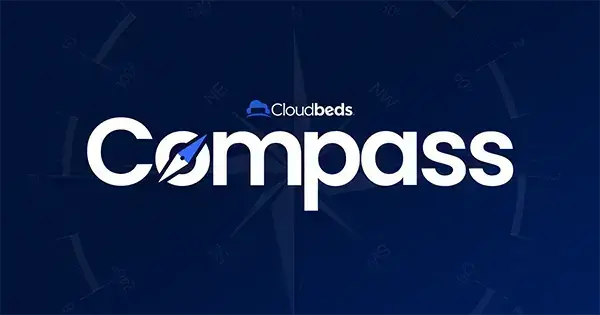The ultimate guide to
hotel revenue management
What if we told you there was a relatively simple way to increase your top-line revenue by 20-30%? Would you believe it? Believe it or not, only a very small percentage of operators in the hospitality industry use revenue management strategies and are potentially robbing themselves of increasing their revenue and profits.
What is revenue management?
Revenue management is the strategic use of performance data, local market data, competitor rates, future demand, and other applied analytics to help predict consumer demand to optimize pricing and distribution in a way that maximizes revenue and profits.
In this series, we will uncover how a revenue strategy can help you realize optimal revenues and gross operating profit for capacity-constrained and perishable assets (room nights, in our case). If implemented correctly, a 50-room property can see an increase of $100,000 – $200,000 each year.
Jacqueline Maloney, Product Marketing Manager at Cloudbeds, shared at Passport 2023 insights into how to create forecasts and price effectively in a dynamic market.
What revenue management is not
It might be easy to believe that good revenue management is about simply following competitor pricing (comp set), chasing after occupancy and revenue growth, or accepting every piece of group business that comes your way. While benchmarking your competitive set and managing occupancy is part of revenue management, mindlessly following these particular behaviors can actually hurt your business. That is because you also need to account for:
- Specifics of your property (location, value proposition, etc.)
- Current market conditions
- Your booking dynamics (pace, length of stay, and speed of sales)
- The future strength of market demand
- Guest price expectations (market segments and your ideal guest profile)
- Hotel industry and market trends
- Historical data
To get the most revenue, you can’t just “set it and forget it.” A revenue manager must spend time planning and demand forecasting for the future (365 days out) and must be flexible enough to use this information in their decision-making process. This diligence helps prevent problems such as having too many unsold rooms or selling out at a rate much lower than it could have been.
The difference between yield management and revenue management
Yield management and revenue management were pioneered by the airline industry, but they are not the same. Revenue management is the comprehensive strategy to grow a hotel business’ overall revenue, whereas yield management focuses on maximizing profit for a specific asset at a particular time, e.g., hotel room revenue in the high season.
Think of yield management as the strategy to sell a room at the right price to the right guest at the right time. Think of revenue management as the larger data-driven strategy that uses data analysis to make accurate forecasts for overall profits.
Indexes used in revenue management science
Let’s look at some metrics and key performance indicators you should already be familiar with:
- Occupancy and Average Daily Rate (ADR). Often used as a shorthand way of measuring the success of a property, but these KPIs alone are a poor measure of the sales volumes they generate.
- RevPAR. A better measurement that takes into account the relationship between these figures is RevPAR (revenue per available room). This metric is helpful for measuring the hotel’s productivity and comparing properties inside of a market – it is a more accurate view of hotel performance as it combines both occupancy and ADR into one statistic.
- TRevPAR. TRevPAR (total revenue per available room) has been gaining recognition as an important measure of success for lodging businesses in the hospitality industry. Why? Because unlike RevPAR, ADR, and Occupancy, TRevPAR measures total revenue performance for the entire property, not just rooms.
- GOPPAR. GOPPAR (gross operating profit per available room) accounts for total hotel revenue and operating costs to measure a property’s operating profit. By dividing total profit by the available guestrooms on property, GOPPAR provides a simple, holistic measure of profit breakdown per room.
Hotel revenue management tactics
Cloudbeds’ 2024 Lodging Report found that in 2023, independent hotels achieved a RevPAR index of 120 relative to 2019. Provided occupancy grows moderately and hotels can maintain or increase average rate through effective revenue management techniques, there is room for additional growth in RevPAR in 2024.
Here are a few tactics hotels can implement to increase RevPAR and other important metrics.
Create a well-balanced distribution strategy
Marketing is a separate discipline, and larger hotel brands and hotel management companies usually have a different position -or even a whole department- dedicated to hotel marketing strategies. However, marketing needs to go hand in hand with revenue management, as timing, rates, and availability will ultimately determine what campaigns you run and when.
One of the biggest goals of any hotelier is to conduct proper inventory management and build a well-balanced distribution strategy with an equal balance of OTA and direct bookings (which, as we know, happen to be the least expensive for the hotel and thus the most profitable). The truth is that this goal is hard to accomplish through revenue management techniques alone. That’s why the marketing and sales departments are the best resources for any Revenue Manager trying to achieve more bookings via various distribution channels. Ensure you look into incorporating the following distribution channels as part of your revenue management strategy:
- Direct website (and integrated booking engine)
- Online travel agencies (OTAs) – a mix of top, regional, and niche OTAs
- Metasearch engines
- Social media channels
- Bed banks
- GDS
Collect and respond to online reviews
TripAdvisor and Google are the leaders in the world of online travel reviews. However, reading and responding to the reviews posted on your website (if applicable), all major OTA sites and social media accounts are also important.
There are SEO benefits, too. Adding original content to websites, such as reviews, is a great way to draw more traffic to your website. Hotel owners must implement a reputation management strategy to consistently monitor and respond to online reviews and use the comments to help make property improvements.
Implement an upselling strategy
Upselling is an effective way of increasing revenue opportunities and improving the guest experience. Make a proactive attempt to sell additional services or amenities at the front desk, on your website, or via email marketing campaigns. Using a guest engagement solution, implement an upsell strategy with relevant touchpoints throughout the guest journey.
Employees should be trained to listen to guests and make suggestions for appropriate accommodation upsells. There are various methods of upgrading: top-down (mentioning the higher-priced option first), rate-category-alternatives (trying to upsell from a lower-rate category to a mid-rate one), or bottom-up (mentioning the cheapest option first and introducing each following category in increments, such as, “For only $19 more…”).
Manage room type differentials
Independent hotels that monitor and analyze the booking pace of different room types during different demand seasons can increase or decrease the difference in rates between them to maximize resulting revenue.
For example, during the summer, 2-bedroom suites may be more popular if a hotel attracts more family businesses, whereas business travelers (single-bed users) may book more frequently during winter. Analyze your booking patterns per room type before making decisions on the room type differentials.
Maximize ancillary revenue
Many hotels have other revenue streams in addition to rooms. If those ancillary revenue venues are significant, it is also important as part of your pricing strategy to manage them to maximize the hotel’s overall profitability. This may mean discounting or even eliminating the costs associated with one department to increase the revenue from another, thus increasing the overall bottom line.
For example, hoteliers can consider offering free parking or a restaurant discount as an incentive for booking a large group or offer a discounted room rate to encourage guests to spend more in the hotel’s casino.
Segment your audience
An often overlooked aspect of revenue management is the importance of segmentation, the practice of grouping hotel guests into categories based on shared consumer behaviors and characteristics. When starting to segment your guests, look at:
- Booking behavior (booking channels, length of stay, lead times, cancellation rates)
- Purpose of travel
- Lifestyle preference
- Preferred room types
Based on these factors, hospitality businesses can make optimal pricing decisions to boost revenue and profitability by targeting different segments based on demand. For example, say one of your customer segments is families; during spring break, hoteliers can leverage dynamic pricing and increase room rates to earn more revenue. In off-seasons, you can focus your attention on other segments, like corporate travelers, to increase occupancy rates.
Optimize your tech stack
All of the revenue management tactics above rely on having a strong foundation backed by technology. Today, many lodging operators utilize a hospitality platform that includes important integrations that contribute to a successful revenue management strategy, including:
- Property management system (PMS). To collect important guest data to help with segmentation and forecasting.
- Revenue management system (RMS). To analyze historical, competitor, and market data to deliver pricing recommendations.
- Channel manager. To streamline the booking process, avoid overbookings, and ensure rates and pricing decisions are consistent across channels.
- Booking engine. To facilitate direct bookings and present rates and upsells in one place.
- Digital marketing solution. To drive awareness and brand recognition to increase the number of rooms sold.
- Guest engagement solution. To improve the guest experience and drive more incremental revenue through upsells and ancillary services.
- Customer relationship management (CRM) system. To conduct personalized sales and marketing campaigns
- Business intelligence system. To make better decisions, improve operational efficiency, and drive revenue growth.
Together, these tools enable real-time optimization across various channels to drive ultimate profitability.





















